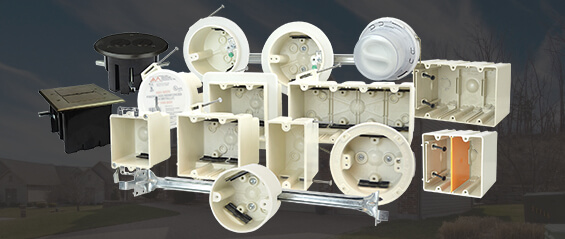Three Hidden Benefits of Non-Metallic Electrical Enclosures
When you work on a large-scale construction project, you have to order a lot of things in bulk. The full list of items is expansive, but one thing that’s easy to underestimate is the electrical box. You have to have many boxes to keep the project up to code, but if you don’t carefully consider the different options before you, you could waste time and money on suboptimal items.
When comparing electrical boxes, one thing to really think about is the material used to make them. Metallic boxes have been common for many years, but non-metal options are widely available and also common. On top of that, non-metal boxes offer some specific advantages. Below, you’ll see three that are often overlooked, even by seasoned professionals.

Weight
Weight isn’t always a front-and-center consideration when choosing electrical boxes, but there are scenarios when its importance is paramount. For some construction projects, controlling weight is at the top of the list, and non-metallic boxes weigh considerably less than their metal counterparts. In such cases, fiberglass and polycarbonate are vastly superior options.
Even outside of specific construction projects, the lower weight of non-metals can lower costs. In a large shipment, the lower weight of the non-metal boxes can cut the overall costs of shipping by notable amounts. On top of that, lower-weight boxes are easier to manage, handle, and install, and that can reduce labor burdens. The larger the project is, the more you reap benefits from reducing the weight of each box.
Thermal Stability
Another advantage that is easy to overlook is thermal stability. What is meant by that? Metals, especially steel, are known to expand and contract quite a bit when temperatures go up or down, respectively.
Non-metallic boxes undergo far less thermal stress in this sense, even when temperature changes are extreme. This property allows non-metal boxes to provide more stability and greater precision in situations where temperatures fluctuate. This is true for outdoor uses, but it’s also true in a wide range of industrial applications.
If thermal expansion and contraction matter, then non-metal boxes are once again the best way to go.
Customization
The benefits above are valuable, but they pale in comparison to the ease of customization you get with non-metallic electrical enclosures. Metal is hard and tough, and manipulating it isn’t easy. Plastics and fiberglass, on the other hand, are much easier to manipulate, and this gives you multiple dimensions of customization.
First, it’s a lot cheaper for a manufacturer to customize a non-metal enclosure design than a metal option, and you can expect those savings to be passed to you. Even adjustable electrical boxes are typically more affordable when they are non-metal.
Second, even at the job site, you can customize boxes as needed with normal hand tools. That allows you to overcome unforeseen challenges, and it makes your enclosures more universally useful. You can punch holes for enclosure accessories, shave the edges of the box, or make any other key adjustments that are needed.
Overall, non-metallic electrical boxes offer a lot. These benefits are powerful and important, but they’re hardly the extent of what you get from choosing non-metals. Electrical conductivity, cost, aesthetics, and so many other factors often come into play. At the end of the day, if you don’t need specific aspects of metal enclosures, non-metals tend to be the better and safer option.
Source URL :- https://sites.google.com/view/alliedmouldedf/home
.jpg)
Comments
Post a Comment